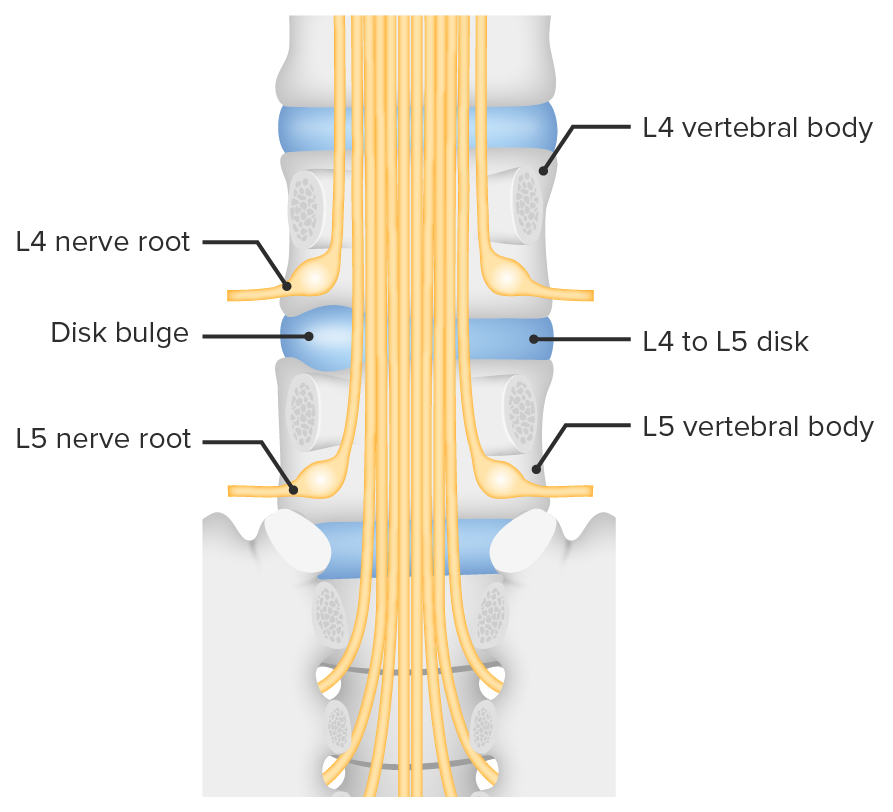Playlist
Show Playlist
Hide Playlist
Myelopathy
-
Slides Diseases of the Spinal Cord.pdf
-
Download Lecture Overview
00:00 So now let's talk about the approach to myelopathy in a patient who presents with signs and symptoms concerning for a spinal cord disorder. What's our approach, how do we break that down, how do we approach those patients? Well first of all, let's start with a definition. Myelopathy just means any disorder affecting the spinal cord. We can refine that word and say myelitis and there we mean any infectious or sometimes inflammatory problem affecting the spinal cord, but myelopathy is that big overarching umbrella term that we use to mean a problem of the spinal cord. Typically, these patients present with very characteristic symptoms, and let's walk through those. First, we want to look for upper motor neuron signs. This may include weakness and spasticity, increase in tone below the area or below the level of the deficit, patients may have discoordination or problems with coordination from descending cerebellar tracts and present with clumsiness. We can see altered tone, hyperreflexia as a very characteristic symptom in patients with spinal cord disorders and should be one of the first things we look at on the exam. We may see pathologic reflexes, crossed adduction or other signs of upper motor neuron pathology. Hoffman sign or Tromner's or upper extremity signs that suggest upper motor neuron pathology and extensor plantar responses or the Babinski sign also points to a problem affecting the spinal cord or somewhere in the central nervous system. We can also see lower motor neuron signs from spinal cord disorders and this is where it gets a little bit complicated. We can see the combination of upper and lower motor neuron signs. 01:39 The key is the lower motor neuron signs are at the level of the disorder and the upper motor neuron signs are below or distal to the level of the lesion. Lower motor neuron signs may include weakness, clumsiness in the muscle group that's innervated at that level, the myotome. Muscle atrophy, hyporeflexia at the level of the lesion, muscle hypotonicity or flaccidity of the muscles and fasciculations. Fasciculations are automatic movements of the muscle, it's a lower motor neuron sign that results from denervation at the level of that lesion. We can see sensory deficits and importantly we want to look for a sensory level. A sensory level is essentially diagnostic of a spinal cord process. Sometimes it can be very difficult to differentiate a sensory level from other sensory findings and it takes meticulous focus to the neurologic exam in these patients to discern that level, which is critically important when evaluating these patients. And then lastly, bowel and bladder symptoms are not uncommon, and sexual dysfunction which requires a careful history and detailed examination.
About the Lecture
The lecture Myelopathy by Roy Strowd, MD is from the course Diseases of the Spinal Cord.
Included Quiz Questions
Which term describes a disorder of the spinal cord?
- Myelopathy
- Myelitis
- Cervicitis
- Meningitis
- Encephalitis
A 45-year-old man presents with weakness, spasticity of the lower extremities, and hyperreflexia. Which of the following terms describes these symptoms?
- Upper motor neuron (UMN) disorder
- Lower motor neuron (LMN) disorder
- Meningitis
- Babinski reflex
- Encephalitis
Customer reviews
5,0 of 5 stars
| 5 Stars |
|
5 |
| 4 Stars |
|
0 |
| 3 Stars |
|
0 |
| 2 Stars |
|
0 |
| 1 Star |
|
0 |





